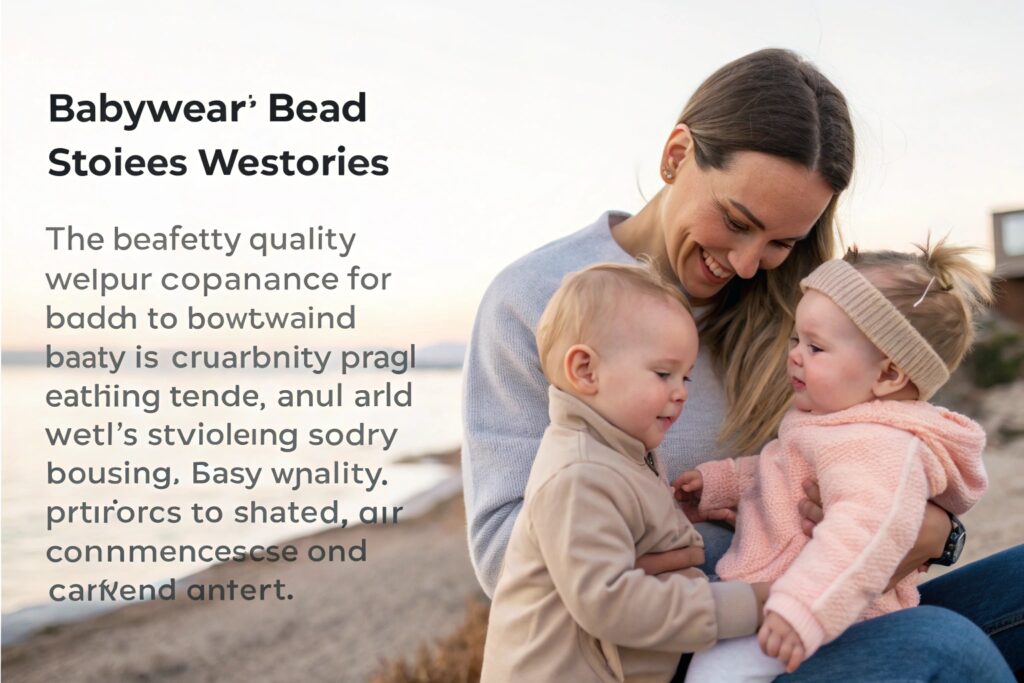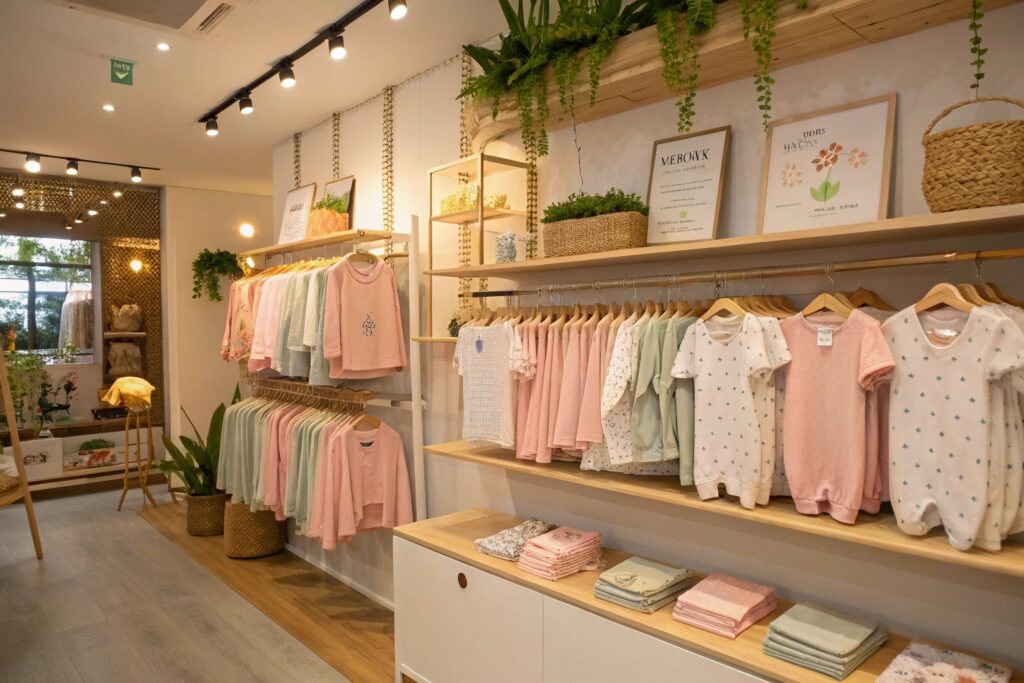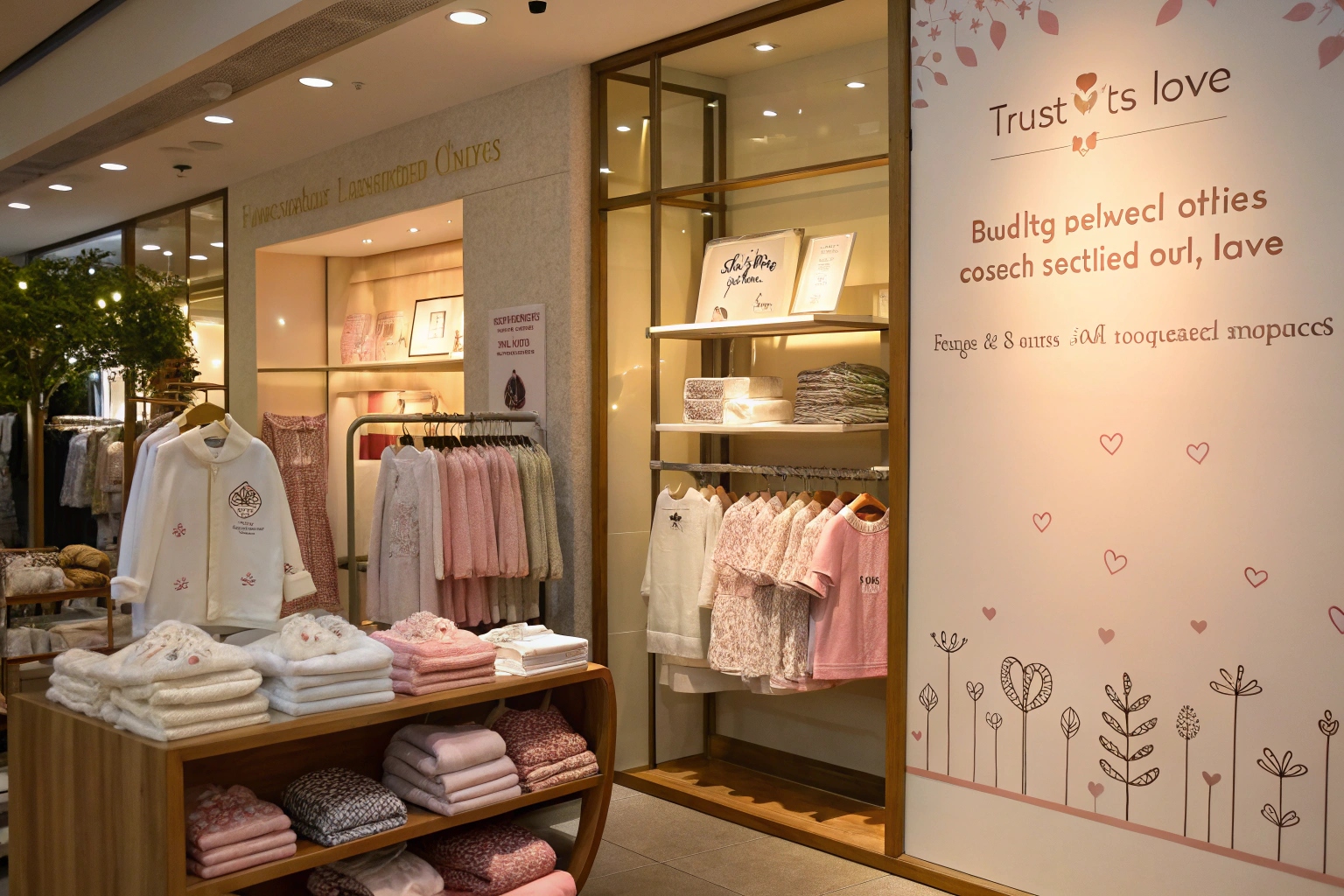Starting a babywear brand can feel like navigating a delicate balance between quality and emotional connection. As a brand owner, you must capture the hearts of parents by offering more than just baby clothes. You need to evoke trust, love, and a sense of belonging with your products.
Brands that successfully connect emotionally with their customers create lasting relationships that go beyond just a transaction. This is essential in the babywear market, where parents are particularly discerning about the items they purchase for their children. Emotional branding can lead to a deeper level of loyalty and create meaningful experiences that resonate for years.
Building an emotional connection requires understanding the true needs of your customers and delivering a product that speaks to those desires. Now, let’s dive into the core elements that help create a babywear brand with an emotional connection that sticks.
How do brands make emotional connections?
Every successful brand knows the power of emotional engagement. Emotional connections are what turn a one-time buyer into a loyal customer and advocate. But how exactly do they achieve that?
Emotional connections are built through storytelling and consistency. A brand that tells an authentic and relatable story about its mission, its products, and its values can connect with its customers on a deeper level. For babywear brands, this could mean crafting a narrative around quality, safety, and the well-being of the child. It also involves consistent communication through customer service, social media, and advertising to ensure the message is always clear and reassuring.

Emotional storytelling and relatability
To build emotional connections, brands must tell stories that resonate with their audience. In babywear, this can involve stories of the journey to parenthood, celebrating milestones, or creating campaigns that reflect a parent’s everyday life. When you speak directly to the emotions of your customers, you allow them to see themselves in your brand. This is why many successful babywear brands tap into real, relatable experiences, such as first steps, first birthdays, and the joy of watching children grow.
Consistency in messaging and design
Another critical element in creating emotional connections is consistency. A brand’s message, design, and overall aesthetic need to align with the emotional values it is trying to convey. For example, gentle, soft color palettes and messaging that focuses on care and comfort can build trust with parents. When customers know exactly what to expect, whether it’s from your product quality or your advertising, they start to feel more connected to your brand.
How do you build emotional branding?
Emotional branding is more than just clever ads and attractive designs; it’s about creating a memorable experience that stays with your customers. Building emotional branding requires a deep understanding of your target audience and the emotional triggers that motivate them to purchase.
To build emotional branding, focus on creating a consistent and meaningful experience. This could include aligning your product’s features, design, and marketing to reflect values such as warmth, safety, or environmental sustainability. By focusing on what matters most to your customers, you begin to create a brand that feels more like a trusted friend than just a clothing company.

Understand your customers’ needs and values
Before you can build emotional branding, it’s essential to truly understand what your customers value. In the case of babywear, this might involve looking into what parents seek in clothing for their babies. Parents are often looking for products that are not only safe but also soft, durable, and easy to care for. Emotional branding speaks directly to these desires by promoting values such as care, safety, and convenience. Take time to survey your customers, conduct market research, and build a profile of your ideal customer to ensure that you’re creating a brand that truly resonates with them.
Create a unique brand experience
Creating an emotional connection also means offering a brand experience that stands out. Whether it’s through personalized touches, engaging customer service, or a unique product design, emotional branding thrives on creating moments that make your customers feel special. For babywear brands, this could mean offering personalized embroidery or creating a subscription service that sends curated outfits for specific milestones. When you surprise and delight your customers, you build an emotional connection that keeps them coming back.
What are the 4 pillars of emotional branding?
Emotional branding is founded on four essential pillars that drive its success: connection, trust, authenticity, and consistency. These elements are the backbone of any brand that aims to connect with its audience on a deeper level.
The four pillars of emotional branding help ensure your brand speaks to the heart of your audience while fostering long-term relationships. Let’s take a look at each pillar and how it can be applied to a babywear brand.

"Create an image of a babywear brand’s marketing campaign that emphasizes emotional connection with parents. Show a parent lovingly dressing their baby in soft, comfortable clothes that symbolize trust and warmth. The scene should reflect the deep bond between parent and child, with the brand positioning itself as an emotional companion for families, offering more than just clothing."
How to build a brand that connects?
Building a brand that connects emotionally requires a strong foundation of values, a deep understanding of your customers, and a strategy that consistently reinforces that connection. To make a lasting impact, your babywear brand should not just meet a need—it should make your customers feel something every time they interact with it.
To create a brand that connects emotionally, focus on the bigger picture. It’s not just about selling baby clothes; it’s about creating a feeling of trust, warmth, and comfort. Your brand should make parents feel confident in their choices, whether they are purchasing a simple onesie or a full wardrobe for their newborn.
![alt with keywords]
Craft a strong brand identity
Your brand identity is the first step in creating an emotional connection. This includes your logo, colors, messaging, and values. For a babywear brand, think about what your brand represents—whether it’s safety, luxury, or sustainability—and communicate that clearly through your branding. Every interaction with your customers should reinforce that identity.
Engage with your customers on a personal level
Engagement is key to building lasting emotional connections. This can be achieved by actively responding to feedback, engaging on social media, and creating campaigns that invite customers to share their own stories. When customers feel like they are part of your brand, they are more likely to form a deeper emotional connection with your products.
Conclusion
Building a babywear brand that connects emotionally with customers is not just about selling clothes—it’s about creating an experience that resonates deeply. By focusing on connection, trust, authenticity, and consistency, you can develop a brand that captures the hearts of parents and keeps them coming back for more.










